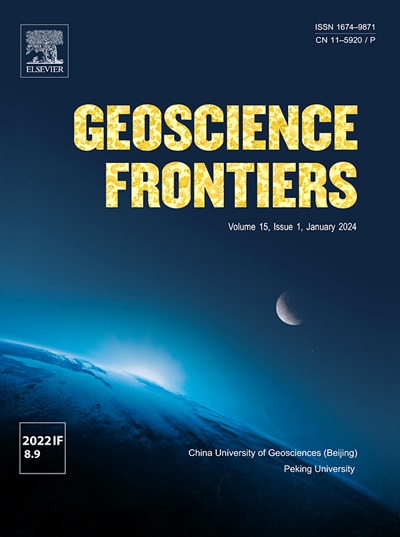Orbital to millennial scale dust activity and humidity interaction in Central Asia during the last glacial period
IF 8.9
1区 地球科学
Q1 GEOSCIENCES, MULTIDISCIPLINARY
引用次数: 0
Abstract
The factors controlling dust activity and humidity in Central Asia and their relationships remain controversial, partly due to a lack of high-resolution geological records for the mid-to-late last glaciation. In this study, we established an optically stimulated luminescence chronology for the QSHA profile in the Yili Basin, a region influenced by westerlies. Grain size and trace element data were used as paleoclimatic indicators. We investigated the relationships among Central Asian dust activity, humidity, and westerlies strength on orbital to millennial scale from 37.4 ka to 11.6 ka. Our study reveals that, on orbital timescales, humidity is positively correlated with westerlies strength which controlled by precession. Dust activity is controlled by Siberian High which was regulated by Northern Hemisphere high-latitude temperature. Their responses to low-latitude and high-latitude forcing mechanisms respectively and present an opposite relationship. On millennial timescales, humidity and westerlies strength are positively correlated. During Marine Isotope Stage (MIS) 2, humidity and dust activity show synchronous fluctuations, while during MIS 3, they exhibit an inverse relationship. Westerlies strength regulated humidity, which subsequently controlled glacial activity in the Tianshan Mountains, influencing dust activity in Central Asia. Additionally, the QSHA profile recorded seven Dansgaard-Oeschger (D-O) events on millennial timescales, indicating a potential link between Central Asian dust activity and high-latitude temperature variations in the Northern Hemisphere. Our findings provide new insights into dust and humidity interaction during the last glaciation periods in Central Asia and contribute to understanding global dust and hydrological cycles.

末次冰期中亚轨道至千年尺度尘埃活动与湿度相互作用
控制中亚沙尘活动和湿度的因素及其关系仍然存在争议,部分原因是缺乏末次冰期中后期的高分辨率地质记录。本文建立了受西风带影响的伊黎盆地QSHA剖面的光激发光年代学。以粒度和微量元素数据作为古气候指标。在37.4 ~ 11.6 ka的轨道至千年尺度上,研究了中亚地区沙尘活动、湿度和西风带强度之间的关系。我们的研究表明,在轨道时间尺度上,湿度与受岁差控制的西风带强度呈正相关。沙尘活动受西伯利亚高压控制,受北半球高纬温度调节。它们分别对低纬度和高纬度强迫机制的响应呈现相反的关系。在千禧年时间尺度上,湿度与西风带强度呈正相关。在海洋同位素阶段(MIS) 2,湿度和粉尘活动呈同步波动,而在MIS 3,它们呈反比关系。西风带强度调节湿度,进而控制天山冰川活动,影响中亚地区沙尘活动。此外,QSHA剖面在千禧年时间尺度上记录了7次Dansgaard-Oeschger (D-O)事件,表明中亚沙尘活动与北半球高纬度温度变化之间存在潜在联系。我们的发现为中亚末次冰期沙尘和湿度的相互作用提供了新的见解,并有助于理解全球沙尘和水文循环。
本文章由计算机程序翻译,如有差异,请以英文原文为准。
求助全文
约1分钟内获得全文
求助全文
来源期刊

Geoscience frontiers
Earth and Planetary Sciences-General Earth and Planetary Sciences
CiteScore
17.80
自引率
3.40%
发文量
147
审稿时长
35 days
期刊介绍:
Geoscience Frontiers (GSF) is the Journal of China University of Geosciences (Beijing) and Peking University. It publishes peer-reviewed research articles and reviews in interdisciplinary fields of Earth and Planetary Sciences. GSF covers various research areas including petrology and geochemistry, lithospheric architecture and mantle dynamics, global tectonics, economic geology and fuel exploration, geophysics, stratigraphy and paleontology, environmental and engineering geology, astrogeology, and the nexus of resources-energy-emissions-climate under Sustainable Development Goals. The journal aims to bridge innovative, provocative, and challenging concepts and models in these fields, providing insights on correlations and evolution.
 求助内容:
求助内容: 应助结果提醒方式:
应助结果提醒方式:


